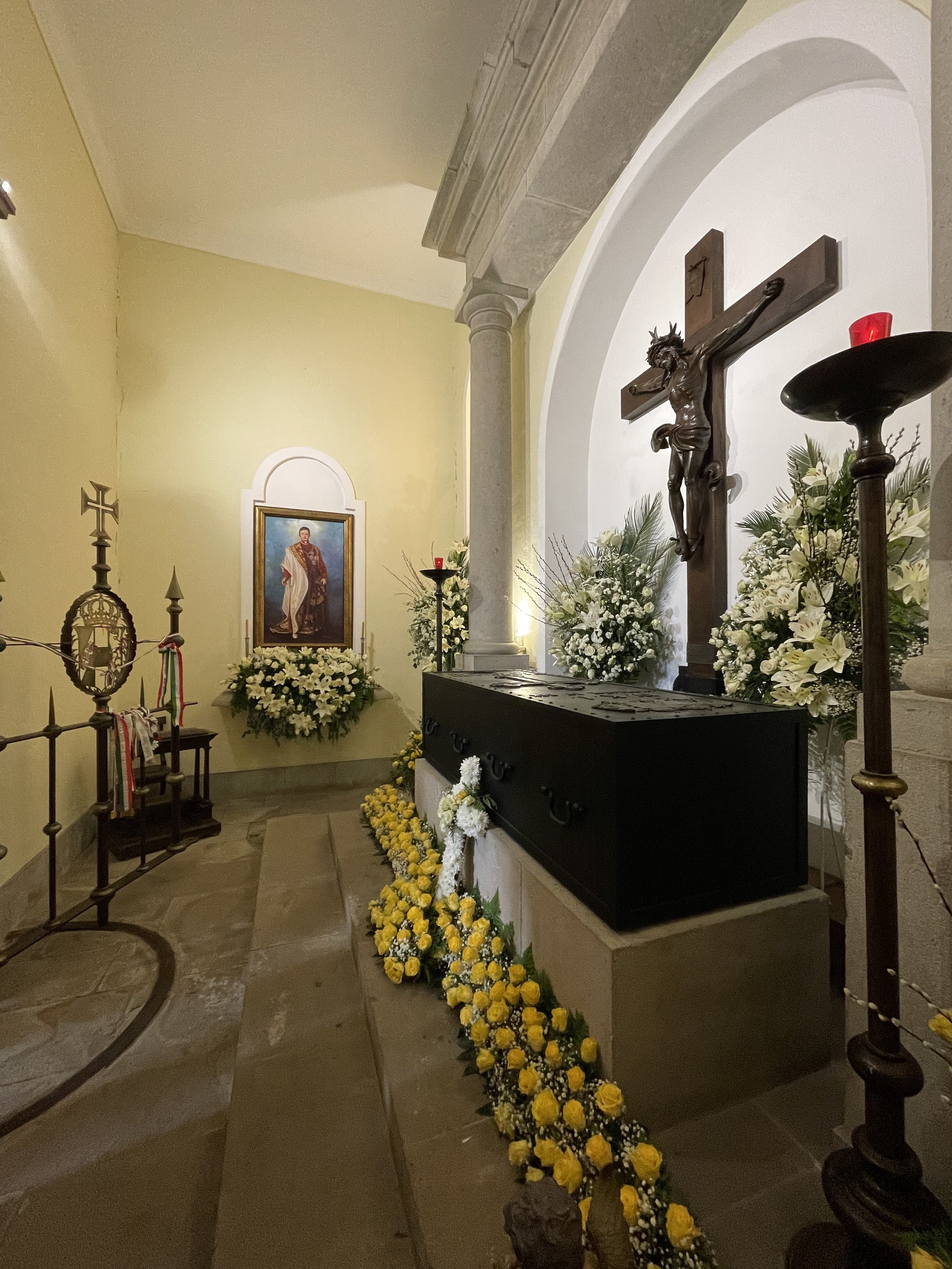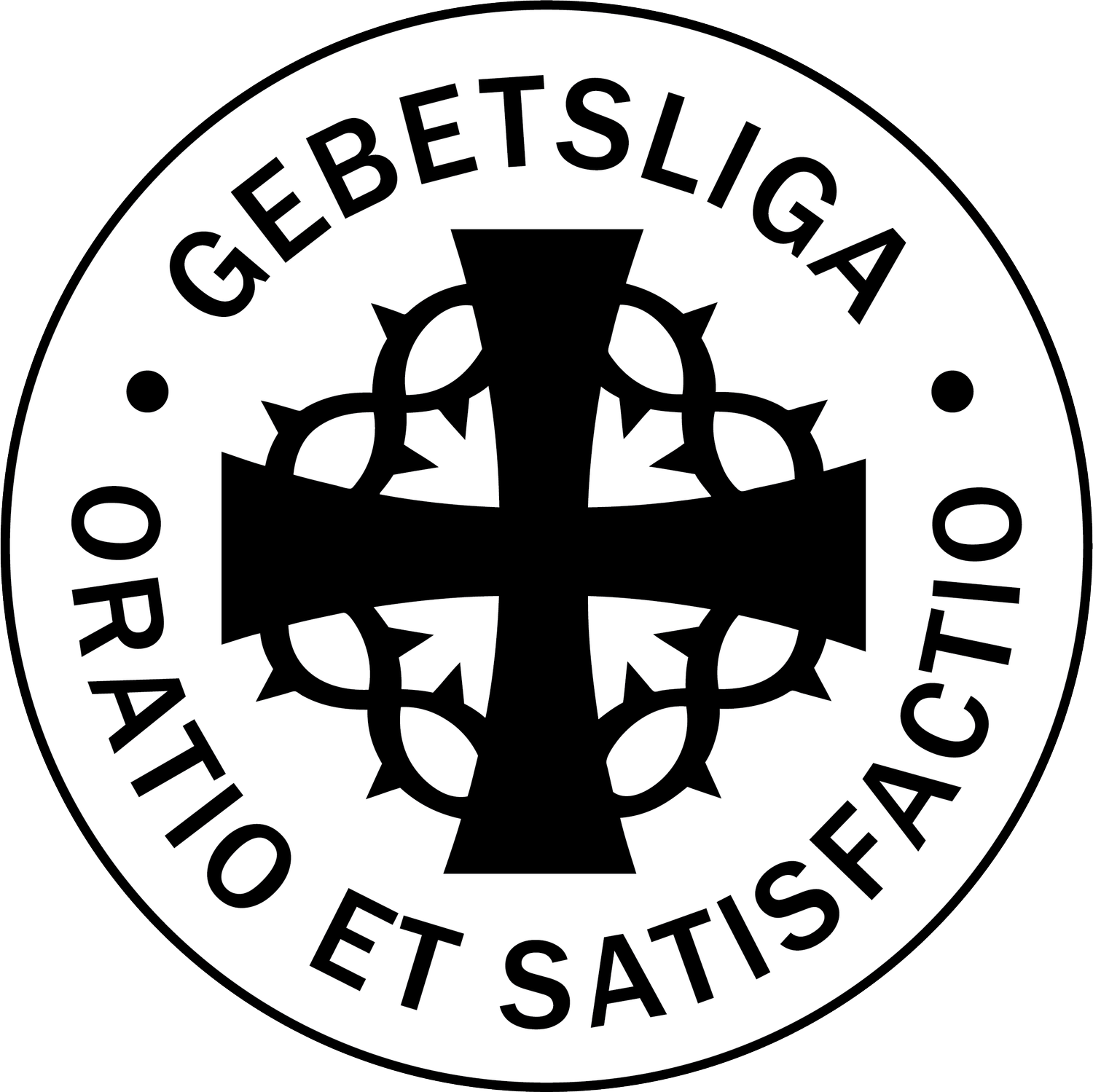
Karl’s Tomb
On April 1, 1922, Emperor Karl died in exile on the island of Madeira, Portugal. While tradition called for the Emperor’s body be buried in Vienna’s Habsburg Crypt, the new government powers that led the family to exile forbid the Emperor’s funeral or burial in the lands of the Monarchy. Karl’s mortal remains would thus remain in Madeira.
Tomb of Karl, ca. 1922, Marian Side Altar, Nossa Senhora do Monte
After Karl’s Requiem Mass on April 4, 1922, his body was entombed under the Marian Side Altar at Nossa Senhora do Monte—the church high atop Madeira island near the family’s home. Almost immediately his tomb become a place of pilgrimage.
By 1949, Karl was already known as a “Servant of God” with his Cause for Canonization advancing each year. Given the influx of pilgrims, a new chapel was created in the transept of the Monte Church in 1967. In 1968, Empress Zita, Archduke Otto, and Members of the Royal Family returned to Madeira for the Solemn Blessing of the new Tomb Chapel. The Chapel encompassed the Emperor’s sarcophagus, an imposing crucifix, and ample space for pilgrims to pray.
Blessing of the new Tomb Chapel of Karl, 1968, Nossa Senhora do Monte
In 1972, the 50th Anniversary of the Emperor’s death was observed. Given such a significant anniversary, it was decided to conduct the canonical exhumation as dictated by the Cause for Canonization. The exhumation not only verified that a person existed and was contained within the tomb, but ensured that the remains were well-preserved. On April 1, Emperor Karl's sarcophagus tomb was gently opened. Led by His Excellency Bruno Wechhner, Bishop of Feldkirch, the commission comprised a diverse assembly of witnesses. It included: the bishop of Funchal and his secretary; archaeology professor Romoli and his diligent crew; a notary; and two medical doctors. Also present were faithful representing Karl’s diverse empire: Austrians, South Tiroleans, Swiss, Germans, some Portuguese, and a Swede. Representing the International Gebetsliga was Jesuit Father Henry Segur.
Among those present were members of the Imperial family: Archduke Otto, the Emperor's eldest son, accompanied by his wife Regina; their daughters Michaela, Walburga, and Gabriele; and the Emperor's youngest son, Archduke Rudolph.
As the tomb was opened, Karl’s body was discovered remarkably well-preserved—despite the fact that a window in the coffin had broken, allowing in moisture and damp, tropical air. Although Emperor Karl underwent a hurried and rudimentary embalming process just after death, the doctors and commission agreed that it could not completely account for the state in which the body was found. The Church, while acknowledging the phenomenon of incorruption, remains steadfast in its discernment, refraining from deeming it as automatic proof of holiness. The sight, however, left a powerful and indelible mark on all the witnesses present. Archduke Otto is recounted as saying, “Here I stand, an old man, gazing into the youthful face of my father.”
In a gesture of reverence, the Emperor's body was clothed in a new uniform, placed in a fresh coffin, and the tomb was reverently resealed.
Tomb Chapel of Blessed Karl in 2022 on the Centenary of his Death, Nossa Senhora do Monte
On December 20, 2003, Pope Saint John Paul II issued a decree promulgating a miracle attributed to Karl. In preparation for the Beatification Ceremony scheduled for October 3, 2004, Archduke Rudolph and Archduke Carl Ludwig journeyed to Madeira in the fall of that year to obtain relics.
During this second opening of the tomb, one rib from the Emperor was taken for the confection of relics. Br. Nathan Cochran, OSB—the late Delegate of the League in the USA / Canada who served as secretary for the Beatification—was entrusted with its delivery to the Vatican. Today, small pieces of this rib relic are present at over 100 shrines around the world, creating a tangible presence of Blessed Karl among the devout faithful.
Blessed Karl’s tomb in Nossa Senhora do Monte atop Madeira island continues to be a place of pilgrimage. It welcomes several thousand pilgrims annually.



